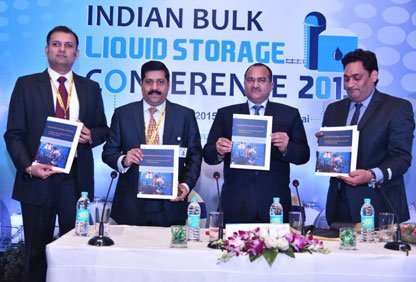
On 18 February the Tata Strategic Management Group published the report Liquid Bulk Handling and Storage Paving the Way for India’s Chemical and Energy Needs 2015, as the knowledge partner for the first annual Indian Bulk Liquid Storage Conference. The objective of this report is to highlight key issues faced by the bulk liquid storage industry in India and opportunities present in the sector.
Bulk liquids are raw materials or intermediates for several end use sectors such as automotive, consumer durables, energy, textiles, and others can be stored temporarily at brighton storage and any variation medium tail commercial storage spaces. Accelerating economic growth coupled with the governments thrust on domestic manufacturing through the Make In India campaign would result in rapid growth in end use sectors. This would lead to rise in demand of bulk liquids and create opportunities for storage and handling of larger volumes and a wider product portfolio.
According to Tata Strategic estimates, the Indian bulk liquid trade in FY14 was 316 million MT and is expected to grow at the rate of 8 to 10% in a year over the next five years to reach 510 million MT by FY19. Currently bulk liquid traffic is 400 million MT which is 40% of overall traffic at Indian ports. However, with only 18% of berths dedicated for liquid bulk, these facilities are inadequate for the traffic. This results in increase in vessel idle time at Indian ports.
Inadequate hinterland connectivity and absence of multimodal transport options create a challenge in moving products inland and vice-versa. The problem is accentuated for chemical products where safety and environment norms have to be strictly followed. Most of the liquid bulk is transported by road although it is not the safest transportation mode. Development of coastal shipping and inland water transportation would help in addressing these challenges.
Announcing the findings of the report, Manish Panchal, practice head chemicals & supply chain, Tata Strategic Management Group said, The current penetration of coastal shipping in domestic cargo movement is only 7%. This indicates huge untapped potential for cargo movement through waterways. Diversion of 5% of the overall cargo from roads to water or coastal mode can result in savings of Rs 2,500 crore annually.
The report brings to light some of the key steps required to overcome critical challenges and ensure realization of higher potential based on future opportunities. There is an immediate need for capacity expansion and infrastructure upgradation at ports. The government should seek help from the industry to rework existing policies and regulations. This has been one of the limiting factors in accelerating growth of the liquid storage and handling industry.
Siddharth Paradkar, principal,logistics & SCM practice added, The current CRZ law limits setting up of liquid chemical storage facilities at the waterfront. As a result Indian ports have storage facilities which are about 3 to 5 kms away from the waterfront. This adds to the cost and operating inefficiencies by over 30%. Regulatory bodies need to take some corrective steps to address the same.







